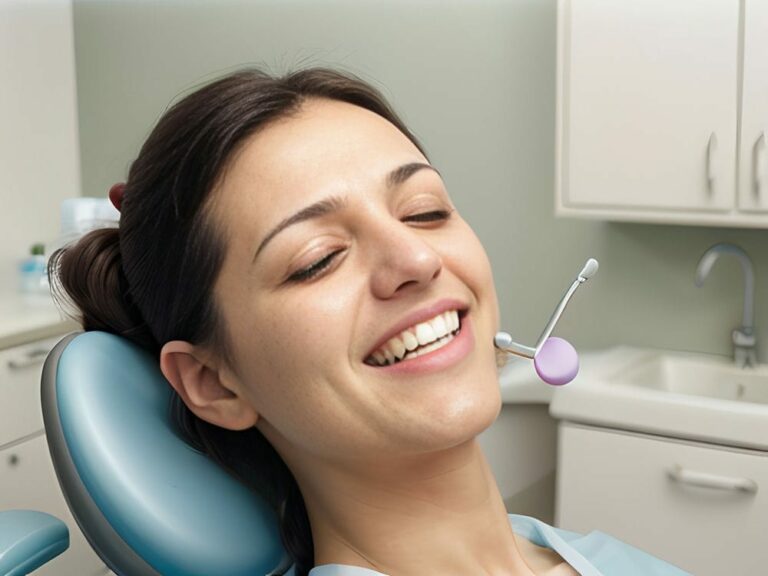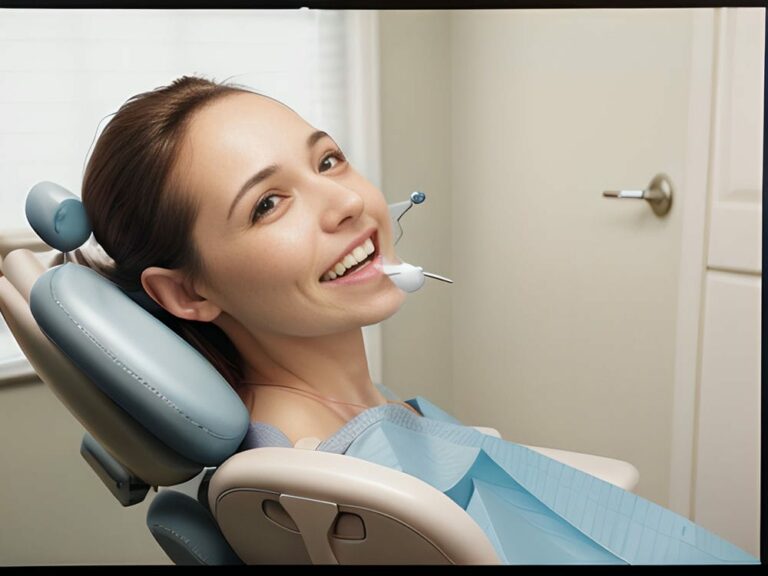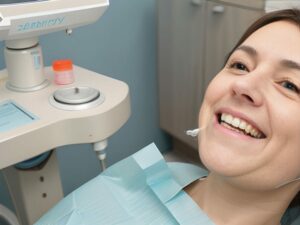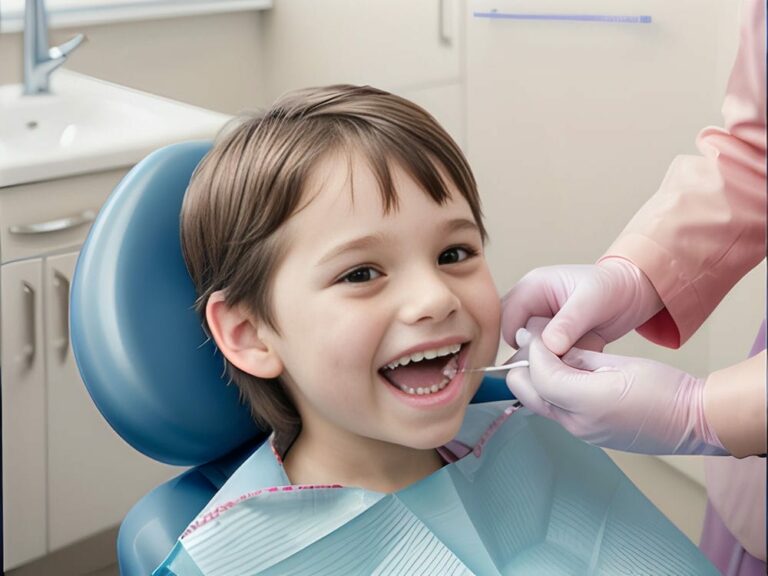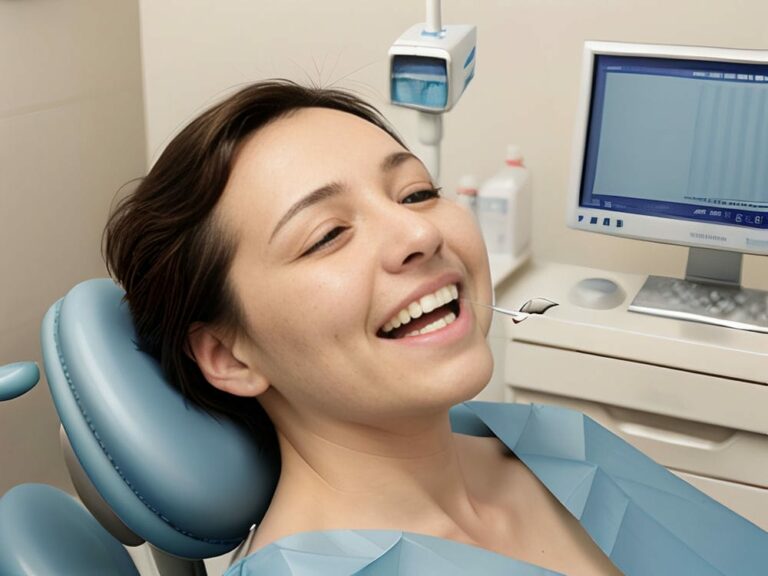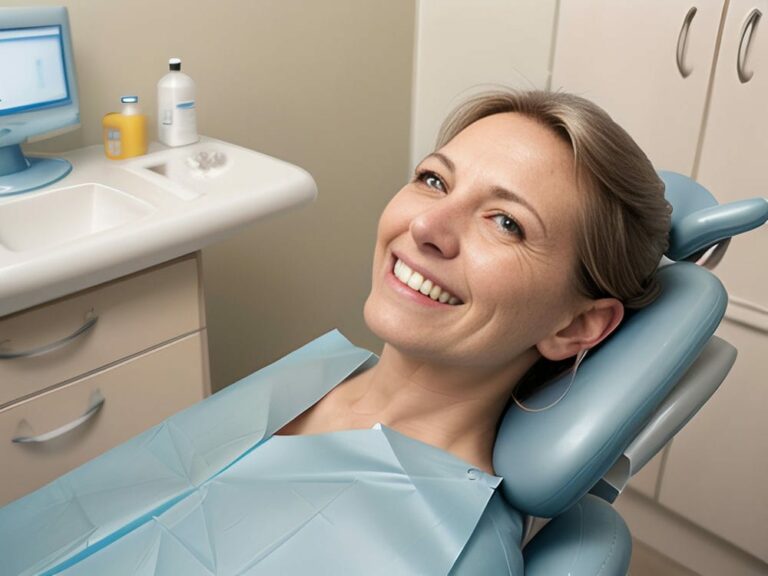The Importance of Sustainability in Dental Clinic Management
The Importance of Sustainability in Dental Clinic Management
In today’s world, sustainability has become a top priority for businesses across all industries. Dental clinic management is no exception to this trend, as the importance of implementing green practices cannot be overstated. By adopting sustainable measures, dental clinics can not only reduce their environmental impact but also improve their overall efficiency and reputation.
One of the key areas where dental clinics can focus on sustainability is energy consumption. By utilizing renewable energy sources such as solar power or wind energy, clinics can significantly reduce their carbon footprint. Installing solar panels on the clinic’s roof can generate clean and renewable energy that powers the clinic’s operations, including lighting, equipment, and heating/cooling systems. This not only reduces reliance on fossil fuels but also lowers electricity bills in the long run.
Another crucial aspect of sustainability in dental clinic management is waste management. Dental clinics generate a significant amount of waste daily, including single-use items like gloves, masks, and syringes. Implementing proper waste segregation and recycling programs can greatly minimize the amount of waste that goes to landfills. Additionally, using eco-friendly materials for packaging and reducing unnecessary paper usage through digital records can further contribute to waste reduction efforts.
In conclusion, embracing sustainability practices in dental clinic management is essential for various reasons. Not only does it help protect the environment by reducing energy consumption and managing waste effectively, but it also improves operational efficiency and saves costs in the long term. By utilizing renewable energy sources and implementing proper waste management strategies, dental clinics can make a positive impact on both their patients’ health and the planet’s well-being.
Eco-friendly Practices for a Green Dental Clinic
Eco-friendly Practices for a Green Dental Clinic
When it comes to creating a green dental clinic, there are several eco-friendly practices that can be implemented. One of the most important aspects is reduction – reducing waste, energy consumption, and water usage. By being mindful of how resources are used and finding ways to minimize their impact, dental clinics can make significant strides towards sustainability.
A key practice in creating an eco-friendly dental clinic is recycling. Implementing a comprehensive recycling program ensures that materials such as paper, plastic, and metal are properly disposed of and given a second life. This reduces the amount of waste sent to landfills and helps conserve natural resources. Additionally, encouraging patients and staff to participate in recycling efforts can create a culture of sustainability within the clinic.
Conservation of energy is another crucial aspect of an eco-friendly dental clinic. Installing energy-efficient lighting fixtures and appliances can significantly reduce electricity consumption. Using motion sensor lights in rooms that are not frequently occupied can further optimize energy usage. Moreover, investing in smart thermostats allows for precise temperature control, minimizing unnecessary heating or cooling.
By implementing these eco-friendly practices such as reduction, recycling, and conservation, dental clinics can contribute to a greener future while also improving their efficiency. These measures not only benefit the environment but also promote patient satisfaction and trust by demonstrating a commitment to sustainability. Creating a green dental clinic is not only responsible but also beneficial for both the planet and the community it serves.
Enhancing Environmental Efficiency in Dental Clinics
Creating an environmentally efficient dental clinic involves implementing strategies to conserve water, improve efficiency, and reduce greenhouse gas emissions. One effective way to achieve this is by installing water-efficient fixtures and equipment throughout the clinic. By using low-flow faucets, toilets, and irrigation systems, dental clinics can significantly reduce their water consumption without compromising patient care.
In addition to water conservation, improving overall efficiency in a dental clinic can have a significant impact on its environmental footprint. Upgrading to energy-efficient equipment such as dental chairs and sterilizers can help reduce electricity usage. Implementing digital record-keeping systems can also minimize paper waste and streamline administrative processes. Furthermore, encouraging staff members to turn off lights and equipment when not in use can further contribute to energy savings.
Reducing greenhouse gas emissions is another important aspect of creating a green dental clinic. Switching to renewable energy sources such as solar power or purchasing carbon offsets can help offset the clinic’s carbon footprint. Additionally, promoting sustainable transportation options for staff members, such as carpooling or cycling to work, can further reduce greenhouse gas emissions associated with daily commutes.
By incorporating these strategies into dental clinic management, practitioners can enhance their environmental efficiency and contribute to a greener future. Not only will these practices benefit the planet by conserving resources and reducing pollution, but they also demonstrate a commitment to sustainability that patients appreciate. Creating a green dental clinic is not only responsible but also aligns with the values of many individuals who are increasingly seeking out eco-friendly healthcare providers.
Implementing Green Practices for Waste Management in Dental Clinics
Implementing green practices for waste management is another crucial aspect of creating an environmentally efficient dental clinic. Dental clinics generate various types of waste, including hazardous materials such as mercury and lead from amalgam fillings, as well as biomedical waste like sharps and contaminated materials. Properly managing and disposing of these wastes is not only necessary for the safety of patients and staff but also for minimizing their impact on the environment.
One way to reduce waste in dental clinics is by implementing recycling programs. By separating recyclable materials such as paper, plastic, and glass from general waste, clinics can divert a significant amount of waste from landfills. Additionally, it is important to properly dispose of hazardous materials through licensed disposal services to prevent them from contaminating soil or water sources.
Furthermore, dental clinics can minimize their carbon emissions by adopting sustainable purchasing practices. This involves selecting products that are eco-friendly and have minimal packaging. Choosing suppliers who prioritize sustainability in their manufacturing processes can help reduce the carbon footprint associated with the production and transportation of dental supplies.
By implementing green practices for waste management in dental clinics, practitioners can significantly reduce their environmental impact. Efficient waste disposal methods, recycling programs, and sustainable purchasing practices all contribute to reducing greenhouse gas emissions and promoting a healthier planet. These efforts not only benefit the environment but also demonstrate a commitment to responsible healthcare practices that patients appreciate and value.
Creating an environmentally efficient dental clinic involves implementing strategies to conserve water, improve efficiency, reduce greenhouse gas emissions, and manage waste effectively. By incorporating these practices into clinic management, dental practitioners can contribute to a greener future while providing high-quality care to their patients.
Energy Conservation Strategies for an Eco-friendly Dental Clinic
Implementing green practices for energy conservation is another important aspect of creating an eco-friendly dental clinic. Dental clinics consume a significant amount of energy through lighting, heating, ventilation, and air conditioning systems. By adopting energy-efficient technologies and practices, clinics can reduce their carbon footprint and save on operational costs.
One strategy for conserving energy in dental clinics is to upgrade lighting systems to LED bulbs. LED bulbs are more energy-efficient and have a longer lifespan compared to traditional incandescent or fluorescent bulbs. Additionally, installing motion sensors or timers in rooms that are not frequently used can help ensure that lights are only on when necessary.
Another way to reduce energy consumption is by optimizing heating, ventilation, and air conditioning (HVAC) systems. Regular maintenance of HVAC equipment can improve efficiency and prevent unnecessary energy usage. Utilizing programmable thermostats can also help regulate temperatures based on occupancy schedules, ensuring that energy is not wasted when the clinic is not in use.
Lastly, patient education plays a crucial role in promoting energy conservation in dental clinics. Educating patients about the clinic’s commitment to green practices and encouraging them to be mindful of their own environmental impact can create a culture of sustainability. Simple actions like turning off lights when leaving a room or using stairs instead of elevators can make a difference in reducing overall energy consumption.
By implementing these strategies for energy conservation, dental clinics can significantly reduce their environmental impact while also saving on operational costs. The combination of upgrading lighting systems, optimizing HVAC systems, and promoting patient education contributes to creating an eco-friendly clinic that values sustainable practices.
Promoting Water Conservation in Dental Clinic Management
Promoting water conservation in dental clinic management is another essential aspect of creating an eco-friendly environment. Dental clinics consume a significant amount of water through various procedures, such as cleaning instruments and rinsing mouths. By implementing water-saving strategies, clinics can reduce their water usage and contribute to sustainability efforts.
One effective strategy for promoting water conservation is providing staff training on efficient water usage. Educating employees about the importance of conserving water and teaching them practical tips, such as turning off faucets when not in use or using low-flow equipment, can make a significant difference. Additionally, incorporating regular reminders and discussions during staff meetings can help reinforce the importance of responsible water usage.
Another way to promote water conservation is by investing in high-efficiency dental equipment. Upgrading to equipment that uses less water or incorporates technologies like recirculation systems can significantly reduce consumption without compromising patient care. While there may be an initial cost associated with purchasing new equipment, the long-term savings in water bills can outweigh the investment.
Furthermore, it is important to consider the overall impact on operational costs when implementing green practices. While some eco-friendly initiatives may require upfront investments, they often result in long-term savings. For example, reducing water consumption not only benefits the environment but also reduces utility bills for the clinic. By carefully evaluating the cost-benefit analysis of implementing green practices and considering potential long-term savings, clinics can make informed decisions that contribute positively to both their environmental impact and financial stability.
By providing staff training on efficient water usage, investing in high-efficiency dental equipment, and considering cost implications, dental clinics can successfully promote water conservation while minimizing operational expenses. Implementing these strategies demonstrates a commitment to sustainability while ensuring both environmental responsibility and financial viability.
Sustainable Procurement and Material Management in Dental Clinics
Sustainable procurement and material management are crucial aspects of creating an environmentally friendly dental clinic. By implementing green practices in these areas, clinics can not only reduce their environmental impact but also save money in the long run.
One way to promote sustainability is by sourcing eco-friendly products and materials. This can include purchasing supplies made from recycled or biodegradable materials, as well as opting for products with minimal packaging. By choosing sustainable options, clinics can minimize waste and contribute to a healthier planet.
In addition to sourcing environmentally friendly products, clinics can also explore innovative technologies that promote sustainability. For example, investing in digital imaging systems can reduce the need for traditional X-ray films, which not only saves resources but also reduces waste and exposure to harmful chemicals. Similarly, using electronic record-keeping systems instead of paper files can significantly decrease paper consumption.
By adopting sustainable procurement practices and embracing innovative technologies, dental clinics can achieve both environmental benefits and cost savings. The initial investment required for eco-friendly products and technologies may seem daunting at first, but the long-term savings in terms of reduced waste and lower operational costs make it a worthwhile endeavor. Ultimately, by prioritizing sustainability and embracing green practices in procurement and material management, dental clinics can lead the way towards a more eco-conscious future.
Integrating Digital Technology for Environmental Efficiency in Dental Clinics
Sustainable procurement and material management are essential aspects of creating an environmentally friendly dental clinic. By implementing green practices in these areas, clinics can reduce their environmental impact and save money in the long run. One way to promote sustainability is by sourcing eco-friendly products and materials. This can include purchasing supplies made from recycled or biodegradable materials, as well as opting for products with minimal packaging.
By choosing sustainable options, clinics can minimize waste and contribute to a healthier planet. For example, instead of using traditional X-ray films, investing in digital imaging systems reduces the need for resources and eliminates waste from film development chemicals. Similarly, electronic record-keeping systems help decrease paper consumption and storage needs.
In addition to sourcing environmentally friendly products, clinics should explore innovative technologies that promote sustainability. The initial investment required for eco-friendly products and technologies may seem daunting at first, but the long-term savings in terms of reduced waste and lower operational costs make it a worthwhile endeavor. Ultimately, by prioritizing sustainability and embracing green practices in procurement and material management, dental clinics can lead the way towards a more eco-conscious future.
Integrating digital technology is another effective way to enhance environmental efficiency in dental clinics. Digital imaging systems not only reduce waste but also provide clearer images compared to traditional X-ray films. This allows dentists to make more accurate diagnoses while minimizing patient exposure to radiation. Additionally, electronic record-keeping systems streamline administrative tasks by eliminating the need for paper files and reducing storage requirements.
By embracing digital technology, dental clinics can improve efficiency while reducing their environmental impact. Transitioning from analog to digital processes eliminates the use of physical materials such as film or paper, thereby decreasing waste production. Furthermore, digital technology enables remote access to patient records and images, promoting collaboration between dental professionals without the need for physical transportation or printing documents.
Implementing sustainable procurement practices combined with integrating digital technology is a powerful combination for creating an environmentally efficient dental clinic. By sourcing eco-friendly products and embracing innovative technologies, clinics can minimize waste, reduce their carbon footprint, and contribute to a more sustainable future.
Creating a Healthy Indoor Environment in Eco-friendly Dental Clinics
Creating a healthy indoor environment is crucial for eco-friendly dental clinics. By implementing green practices in clinic management, dental professionals can ensure the well-being of both patients and staff while reducing their environmental impact.
One important aspect of creating a healthy indoor environment is maintaining good air quality. Dental clinics can achieve this by investing in high-quality air filtration systems that remove pollutants and allergens from the air. Additionally, using low VOC (volatile organic compound) paints and adhesives when renovating or redecorating the clinic can minimize the release of harmful chemicals into the air.
Another way to promote a healthy indoor environment is by implementing proper waste management practices. Dental clinics generate various types of waste, including medical waste and hazardous materials. It is essential to follow strict guidelines for the disposal of these wastes to prevent harm to both human health and the environment. Implementing recycling programs for paper, plastic, and other recyclable materials can also help reduce waste and promote sustainability.
Furthermore, maintaining proper ventilation in dental clinics is crucial for creating a healthy indoor environment. Good ventilation helps to remove odors, control humidity levels, and prevent the buildup of contaminants in the air. This can be achieved through regular maintenance of HVAC systems and ensuring proper airflow throughout the clinic.
By prioritizing a healthy indoor environment through practices such as good air quality, proper waste management, and adequate ventilation, eco-friendly dental clinics can provide a safe and comfortable space for patients while minimizing their environmental impact. Taking these steps not only benefits patient health but also contributes to a more sustainable future for all.
Employee Training and Engagement for Green Dental Clinic Management
Employee Training and Engagement for Green Dental Clinic Management
To effectively implement green practices in dental clinic management, it is essential to prioritize employee training and engagement. By providing education and encouraging staff involvement, dental professionals can ensure that sustainable practices are embraced and implemented throughout the clinic.
Firstly, offering comprehensive training on eco-friendly practices can equip employees with the knowledge and skills necessary to make environmentally conscious decisions in their daily tasks. This training can cover topics such as proper waste segregation, energy conservation techniques, and the use of eco-friendly products. By empowering staff with this information, they can actively contribute to reducing the clinic’s environmental impact.
Secondly, fostering a culture of sustainability through employee engagement is crucial for long-term success. Encouraging open communication channels between staff members allows for the sharing of ideas and suggestions on how to improve green practices within the clinic. Regular team meetings or brainstorming sessions dedicated to sustainability initiatives can facilitate collaboration and provide opportunities for employees to contribute their unique perspectives.
Lastly, recognizing and rewarding employees who actively participate in green initiatives can further enhance staff engagement. Celebrating achievements such as reducing waste or implementing energy-saving measures not only motivates employees but also reinforces the importance of sustainable actions within the clinic. By acknowledging their efforts, dental professionals can inspire a sense of pride among staff members while fostering a continued commitment to environmentally friendly practices.
By prioritizing employee training and engagement in green dental clinic management, dental professionals can create a workforce that is knowledgeable about sustainable practices and actively involved in implementing them. This collaboration between staff members ultimately leads to a more efficient and environmentally responsible dental clinic.
FAQs
Q: Why is it important for dental clinics to implement green practices?,
A: Implementing green practices in dental clinics helps reduce environmental impact and promote sustainability.,
Q: What are some examples of green practices that dental clinics can implement?,
A: Dental clinics can implement practices such as reducing water and energy consumption, using eco-friendly materials, and properly disposing of hazardous waste.,
Q: How can dental clinics reduce water consumption?,
A: Dental clinics can reduce water consumption by installing low-flow faucets and toilets, using water-saving devices, and promoting water conservation among staff and patients.,
Q: What are eco-friendly materials that dental clinics can use?,
A: Dental clinics can use eco-friendly materials such as biodegradable dental products, recyclable packaging, and non-toxic cleaning supplies.,
Q: How can dental clinics reduce energy consumption?,
A: Dental clinics can reduce energy consumption by using energy-efficient appliances and lighting, properly insulating the clinic, and encouraging staff to turn off lights and equipment when not in use.,
Q: What is the proper way to dispose of hazardous waste in dental clinics?,
A: Dental clinics should follow local regulations and guidelines for the proper disposal of hazardous waste, which may include using designated containers and arranging for safe disposal through authorized waste management services.,
Q: How can dental clinics promote sustainability among patients?,
A: Dental clinics can promote sustainability among patients by providing education on green practices, offering eco-friendly alternatives such as digital x-rays, and encouraging patients to bring their own reusable dental products.,
Q: Are there any financial benefits to implementing green practices in dental clinics?,
A: Yes, implementing green practices can lead to cost savings in the long run by reducing water and energy bills, minimizing waste disposal costs, and attracting eco-conscious patients.,
Q: What are the challenges that dental clinics may face when implementing green practices?,
A: Some challenges dental clinics may face include finding eco-friendly suppliers, training staff on green practices, and overcoming resistance to change.,
Q: Are there any certifications or programs that dental clinics can join to showcase their commitment to green practices?,
A: Yes, dental clinics can join programs such as the Green Dentistry Certification or become members of dental associations that promote sustainability to showcase their commitment to green practices.










